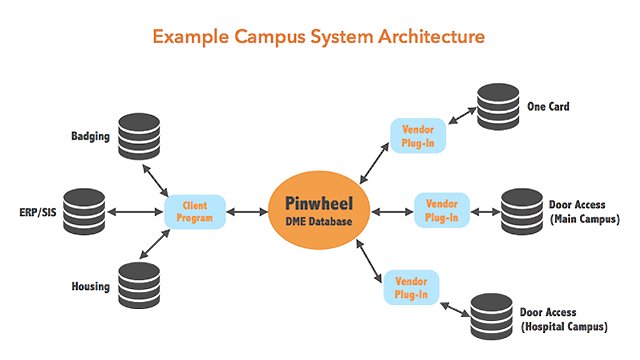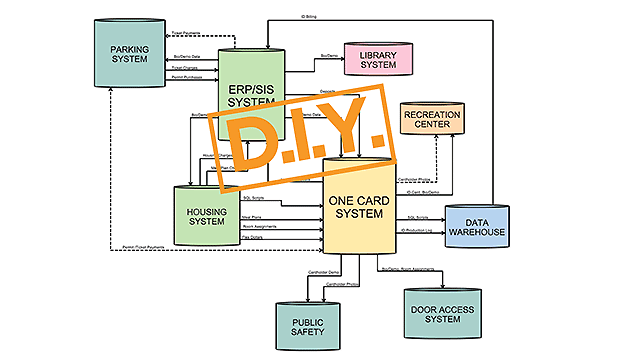In a campus environment, how much does the security of buildings, rooms, and doors depend on having real-time, accurate data in administrative systems? The quick answer: extremely important. Overlooking data integrity in campus physical security can be a significant vulnerability that can put students and faculty at risk.
MANAGING CAMPUS DATA INTEGRATIONS
It is no secret that time spent managing campus data administration systems is a daunting task that affects multiple departments. Often times, admins are having to duplicate data entry efforts to keep data synchronized and up to date across multiple systems. Manual data entry creates many problems – from human entry errors to lack of real-time synchronization, which causes delays across campus. In most instances, errors or delays in data are minor inconveniences that can be fixed or resolved at a later date. This is simply not the case when it comes to the data that is used to manage an access control system. Inconsistent data creates security gaps and could grant someone access to a restricted area on campus where the potential for risk and loss is very high.
DO IT YOURSELF (DIY)
In many cases, the campus IT department has evolved past manual data entry and has developed more sophisticated processes over time. A Do It Yourself (DIY) approach typically involves custom-developed software scripts used to automate the business logic in administrative systems. This marks an improvement because manual processes no longer bog down campus staff, and human data entry errors are reduced.
However, the DIY method is not without its issues. For every new reader that goes on a new door, your custom script needs to be updated to account for the change in business logic. Allocating the necessary resources to maintain and update scripts every time there is a change in business logic can incur significant internal costs. In-house, DIY software scripts require internal support, updates, accurate documentation of processes, and oftentimes rely on third-party tools that add additional cost. In addition, this same process needs be repeated and custom-built for each new system that needs integration—like campus access control or meal plan systems.
AUTOMATING DATA INTEGRATIONS
- ERP/SIS
- Housing
- One Card
- Public Safety
- Door Access Security
- Library
- Rec Center
- Parking
- Data Warehouse
The Pinwheel DME from SwiftData and Convergint starts with existing systems of record and determines the operational business rules on how to best automate workflow with the data available. This data is continuously passed through the Pinwheel DME database, where it is processed and manipulated based campus business rules.
USE CASE EXAMPLE
The encrypted data is securely stored in the database and sent to the respective third party systems, such as one card, door access, and parking systems with vendor-specific plugins. Since all work is done in Pinwheel DME, only the required and recently updated data is pushed out, eliminating the risk of system slowdowns and inaccuracy.

For example, one campus uses Pinwheel DME to seamlessly automate their online room reservations to their wireless door locks. In another instance, the college campus administrator said his staff efficiency was increased by 76% and that DME eliminated a major security risk by automating data integrations. And recently, a university started using the software to track event attendance and directly update their ERP to automate and distribute credits.
BENEFITS OF PINWHEEL DME
- Reduces operating expenses: one solution handles all data integrations
- Eliminates bad and duplicate data entry caused by human error
- Reduces security risks
- Reduces use of disparate shadow data systems
- Saves time and reduces system admin times
- Can replace an existing system without needing to rewrite the data integration
- Full customer support from SwiftData and Convergint

